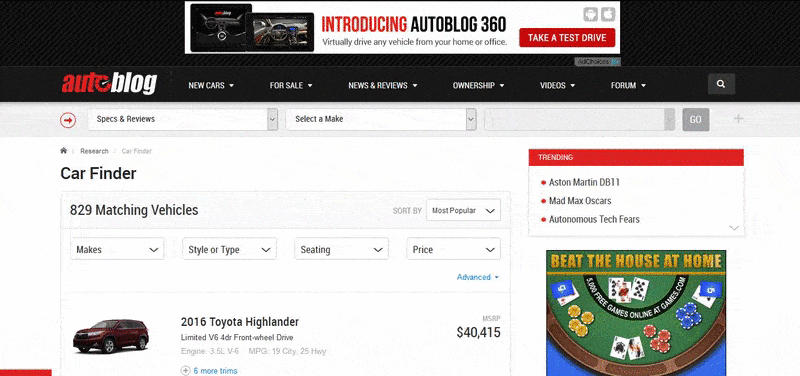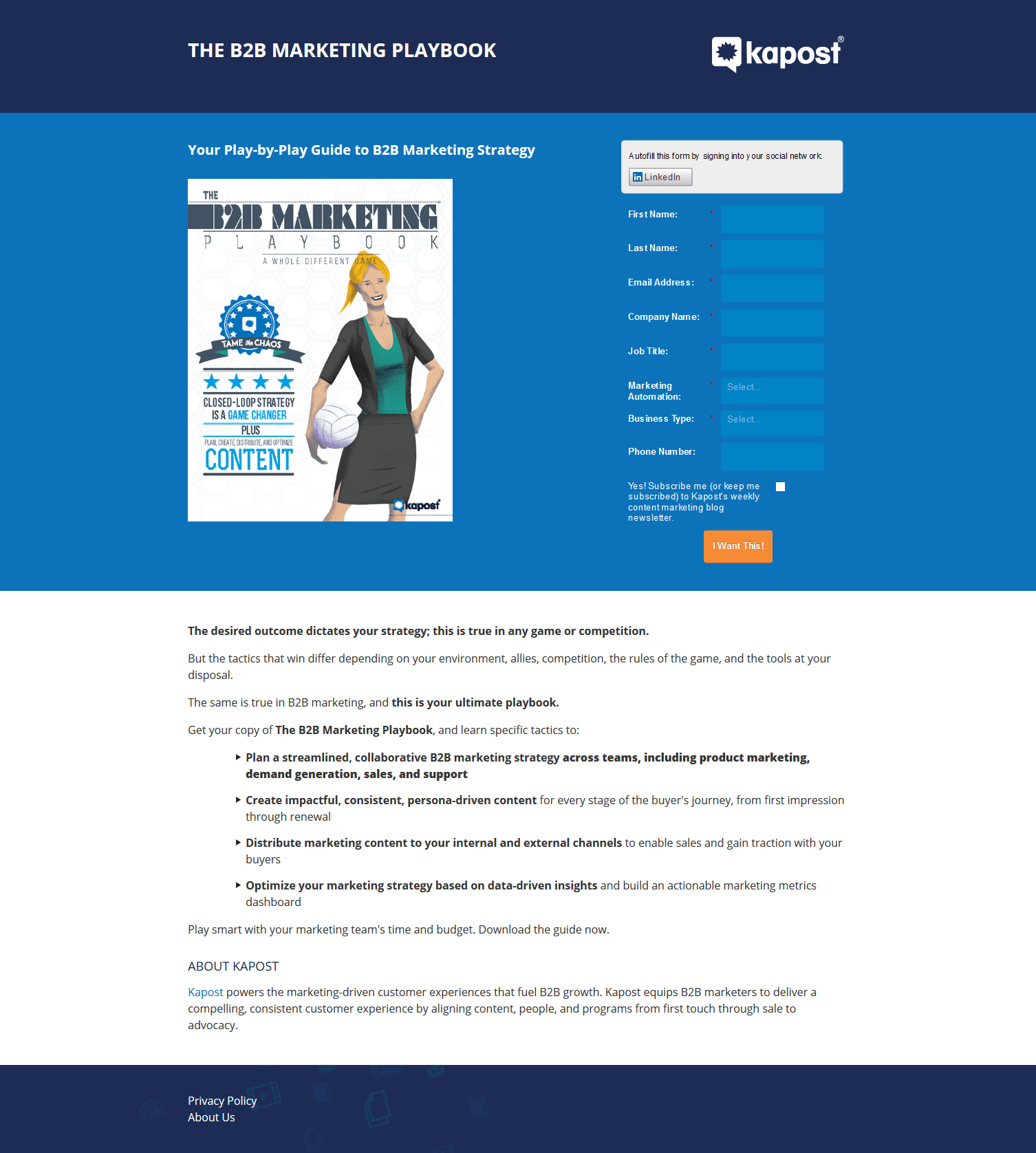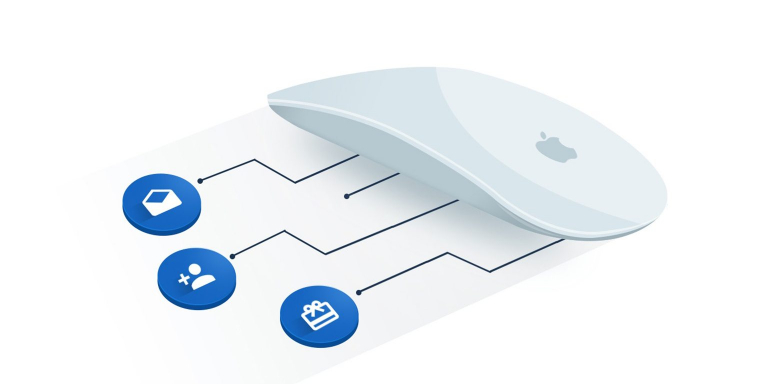What happens when visitors click your online ad? They:
- Arrive at your post-click landing page (hopefully)
- Read your headline, copy, and scan the rest of your page
- Decide whether or not to click your CTA button
All while you patiently wait for them to convert.
That’s it, right? Your job as a marketer is complete, and the fate of your conversions now rests with your visitors.
Wrong!
Your conversion story doesn’t end with the click of your online ad. In fact, this is where the second half of the marketing journey begins — the post-click marketing part.
What is Post-click marketing?
Post-click marketing is the practice of engaging visitors after they click an online advertisement. Once the visitor clicks your ad, the following actions occur under the post-click marketing umbrella:
- Where you send your traffic
- How you convert this traffic
- What follow up process you execute after you receive the conversion
Marketers who optimize their post-click marketing can enjoy:
- Higher conversion rates
- Lower cost-per-acquisition
- Better online ROI
Now that we’ve covered some basics, let’s look at some examples to learn how you can achieve all three of those goals in all of your marketing campaigns.
Post-click marketing examples
Let’s start off by showcasing post-click marketing in action.
The stark differences between Autoblog and Kapost’s marketing experiences below are good indicators of what to do and what not to do with your post-click marketing.
So, I was going through Forbes’ article on “2016 World’s Billionaires” the other day and saw this display ad for Autoblog. The ad promises to find me the perfect car that’s going to fit my budget:

When I click the ad, it brought me to this page:

This is clearly a product page, not a post-click landing page — which breaks the number one rule of post-click marketing. All of your ads should take your visitors to optimized post-click landing pages, not busy, confusing product pages like the one above.
Autoblog never asked my budget range. The product page randomly lists car prices, and there are 56 pages to browse if I really want to find my perfect car. The page does not fulfill what the ad promised: Where is the perfect car that they found for me?
This is an example of what not to do with your post-click marketing. Autoblog didn’t optimize the post-click landing page, so I abandoned the page without clicking any button or reconsidering my choice to leave.
Still on the same Forbes article, I saw another ad — this time for Kapost’s free ebook:

This is the post-click landing page they sent me to after I clicked their ad:

Kapost does a much better job of post click marketing because:
- The ad and page have a clear link. Not only is the copy message-matched, but the sports-themed images match on both the ad and the post-click landing page.
- The post-click landing page itself is also optimized, i.e. all of the elements are relevant to the ad and are personalized to suit the visitor’s experience.
- Copy is presented in an easy to read bulleted list.
- There is ample white space surrounding the form, which draws attention to the form.
- CTA is eye-catching and designed in a contrasting color.
So far so good.
But, this is not where your post-click marketing stops.
I filled out the lead capture form and downloaded the B2B Marketing Playbook. Once I clicked the CTA button, Kapost’s on-screen thank you message lets me know my ebook will be emailed:

Within two minutes I receive the playbook in my inbox along with another thank you note and a CTA that takes me to the PDF:

This ad-landing-page-thank-you-message-email sequence is great post-click marketing in action. I received a valuable piece of content and enjoyed my interaction with Kapost — so much so that in the future if I see another ad by Kapost, I’d be more likely to click and convert.
See the difference between Autoblog and Kapost and why an optimized post-click landing page is essential to increasing conversions and user experience?
Characteristics of an optimized post-click marketing experience
After seeing many examples in action, I was able to identify the common characteristics all optimized post-marketing experiences possess.
Post-click marketing should be:
User-centric
Think about the user experience, how they’ll proceed from point A to point B in your marketing journey.
Continuous
The pre-click and post-click landing page for your visitors needs to be natural and continuous. Don’t have your ad promise something that your post-click landing page (or any other page that comes after it) doesn’t deliver.
Relevant
Your ad and everything thereafter must be relevant and natural to each other. All elements on the post-click landing page must be relevant to the conversion goal. Then, your thank you page and follow up emails should mention the same conversion goal.
Segmented
Segment your visitors based on campaigns, demographics, need, etc. Use this segmentation information to optimize your visitors’ marketing journey further down the funnel, from the awareness stage to the decision stage.
Tested
Use A/B testing to determine what is making your visitors convert and what is failing to convert. After you reach statistical significance, stick with the variation that’s getting you more conversions (but continue testing new variations).
Post-click marketing doesn’t end with post-click landing pages
Of course, post-click landing pages are a crucial part of post-click marketing. However, the post click landing page doesn’t end with the click of the post-click landing page’s CTA button. Continue the relationship with your visitors with the help of thank you pages and follow-up emails.
When you give your visitors an optimized post-click marketing experience, you’re able to convert them easier. This results in a higher ROI from your campaigns and a lower cost per acquisition.
You can create optimized thank you pages easily with Instapage, sign up for an Instapage Enterprise demo today.

See the Instapage Enterprise Plan in Action.
Demo includes AdMap™, Personalization, AMP,
Global Blocks, heatmaps & more.
